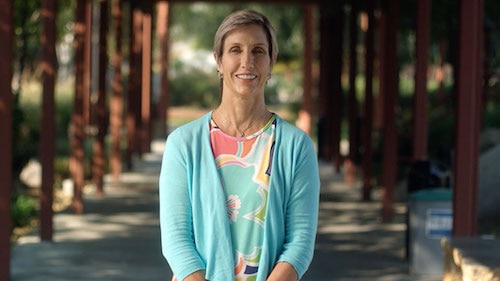Looking to the Future With Hitachi Vantara CIO Renée Lahti



We sat down with SVP & CIO of Hitachi Vantara Renée Lahti McKaskle to learn more about her vision, the innovative ways her team has leveraged the Salesforce Customer Success Platform, and how success for the project extends beyond increasing profitability.
Our team at Salesforce recently produced a film to highlight the trailblazing story of Hitachi Vantara who’s in the process of an enterprise-wide digital transformation. Film Producer and Director, Shane Tapp, sat down with Renée Lahti McKaskle, SVP & CIO of Hitachi Vantara to learn more about her team’s ambitious project. During their conversation, Renée spoke of her vision, the innovative ways her team has leveraged the Salesforce Customer Success Platform, and how success for the project extends beyond increasing profitability.
Can you tell us about the digital transformation project you’re undergoing called Mirai and give us more insight into how far Hitachi Vantara has progressed?
“Mirai” means the future in Japanese, which we thought was a little head nod to our roots but also speaks to how we expect to be a digital company. We’re moving from our legacy manufacturing business where we sold IT infrastructure hardware to a whole new go-to-market strategy with a portfolio of solutions and services. It’s a transformation from a CAPEX business model to an OPEX one, and this change has forced us to look at our end-to-end process from marketing all the way to supply chain because the product is different. It’s bundled. It’s solutions. It’s outcomes driven. It’s pay as you go. It’s all of the things I wanted from my vendors when I was a customer on the other side of the table.
But you have to crawl, walk, and then run. Initially, we approached the transformation from an adjacency perspective. What’s our heritage and what are the adjacent markets where we can support our customers as they digitize and leverage technologies like AI for smarter data centers and supply chains? We started with three or four portfolio product lines and then used agile sprints to refine along the way based on feedback from our customers. It’s all about customer success and hearing from them helps guide us where to go next.
Transformation never ends, but we’re about 18 months into a 24-month journey. So far we have 90% of the company impacted by the work we’re doing on project Mirai, and I’d say they’re all trailblazers.
As part of the transformation project, your team has rolled out Salesforce. How has Salesforce Customer 360 helped your journey?
We talk about it in terms of data. At the end of the day, it’s the data and the information that is most relevant to improve the customer experience. We’re in an era where we depend so much on data and are producing so much data every day but don’t even know what’s in a lot of the data yet. However, if you are a company that’s supporting your customers, then it’s your job to help them unlock the power in that data.
When we rolled out Customer 360, internally we referred to the system as “One View,” and it was the start of our move to the digital age. When you work with a partner like Salesforce, you start to recognize the power of the data and how it’s served up in a way that’s easily digestible for the individual that needs to use it to help a customer. The 360? view of the customer we have with Salesforce gives everyone on the team a common language. For example, if something happens in the field, the support engineer is immediately able to connect with the rest of the ecosystem to support the customer.
You mentioned the partnership with Salesforce. Why do you think there is such a strong partnership between our companies?
When I joined the team three years ago, one of the first things that I realized we needed to do was find a strong partner who shared the empathy and social responsibility we have here at Hitachi Vantara. For us, it’s not just solving a problem for one, but solving for many, which means helping the underserved or underprivileged. We call it social innovation and it’s in our DNA much like the 1-1-1 model at Salesforce. As our teams have talked and bonded over the last three years, these shared values are a common language that we have that’s inherent in what we do together.
You need to have a healthy bottom line for your company, but it better be in the context of helping society.
Learn more about how Hitachi Vantara is transforming its business model to build deeper customer partnerships. Watch the film to learn more.

























